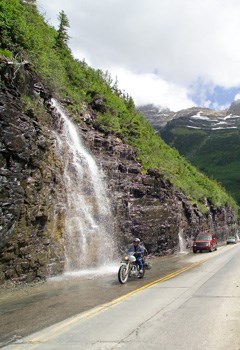
NPS / David Restivo.
The variety of sounds you hear in national parks come from a combination of sources, including wildlife, ecological processes such as rivers and streams and wind through trees, and cultural-historic events such as cannon fire in battle reenactments and clanging mission bells. These sounds are essential for the integrity of the park ecosystem and enjoyment of our visitors. The National Park Service Organic Act establishes an obligation to protect all natural resources, including natural sounds. The NPS wants you to be able to hear this range, from rushing waterfalls to bird songs.
Managing excessive and/or inappropriate noise in parks improves the quality of the park soundscape, and benefits additional park resources such as wildlife, wilderness character, and cultural-historic sites. It also improves the quality of your visitor experience, including increased chances of seeing wildlife. If you're really quiet, you might get to see that moose! Learn more about the sounds the NPS protects in Why Sounds Matter,
Parks do their part to reduce noise by using quieter machines and motors, creating sound barriers to buffer loud activities, scheduling events at times of least impact to wildlife and visitors, establishing quiet zones, and encouraging park visitors to be mindful of their surroundings during park outings and activities.
Learn what we are doing to improve park soundscapes. And visit Overflights and Policies and Authorities for information about sound requirements.
Last updated: February 2, 2018
